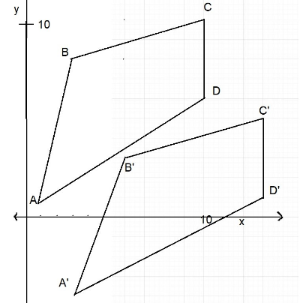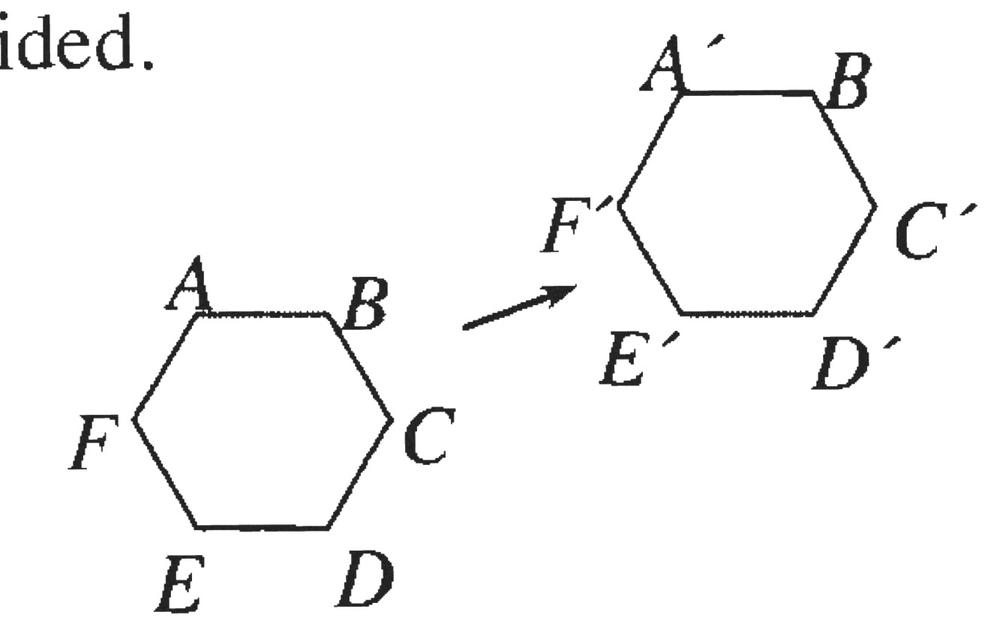
All Solutions
Page 186: Closure Activity
{color{#4257b2}text{a)}}
$$
$$
begin{align*}
6xleft(2x+y-5right)& {=}quad :6xcdot :2x+6xy+6xleft(-5right)tag{Distribute parentheses}\
&=6xcdot :2x+6xy-6xcdot :5 \
&={color{#c34632}12x^2+6xy-30x}
end{align*}
$$
$$
color{#c34632} text{ } mathrm{Apply:minus-plus:rules}
$$
$$
text{ }
$$
{color{#4257b2}text{b)}}
$$
$$
begin{align*}
left(2x^2-11right)left(x^2+4right)& {=}quad : 2x^2cdot :x^2+2x^2cdot :4-11cdot :x^2-11cdot :4\
&=2x^4+2cdot :4x^2-11x^2-4cdot :11 \
&=2x^4+8x^2-11x^2-44 \
&={color{#c34632}2x^4-3x^2-44}
end{align*}
$$
$$
color{#c34632} text{ } mathrm{Distribute:parentheses:using}:quad left(a+bright)left(c+dright)=ac+ad+bc+bd
$$
$$
color{#c34632} text{ }a=2x^2,:b=-11,:c=x^2,:d=4
$$
{color{#4257b2}text{c)}}
$$
$$
begin{align*}
left(7xright)left(2xyright)& {=}quad : 7xcdot :2xytag{Remove parentheses}\
&=14xxy \
&=14x^{1+1}y \
&={color{#c34632}14x^2y}
end{align*}
$$
$$
color{#c34632} text{ }mathrm{Apply:exponent:rule}:quad :a^bcdot :a^c=a^{b+c}
$$
$$
text{ }
$$
{color{#4257b2}text{d)}}
$$
$$
begin{align*}
left(x-2right)left(3+yright)& {=}quad : xcdot :3+xcdot :y-2cdot :3-2cdot :y\
&={color{#c34632}3x+xy-6-2y}
end{align*}
$$
$$
color{#c34632} text{ }mathrm{Distribute:parentheses:using}:quad left(a+bright)left(c+dright)=ac+ad+bc+bd
$$
$$
color{#c34632} text{ } a=x,:b=-2,:c=3,:d=y
$$
color{#4257b2} text{ a) } 12x^2+6xy-30x
$$
$$
color{#4257b2}text{ b) }2x^4-3x^2-44
$$
$$
color{#4257b2}text{ c) }14x^2y
$$
$$
color{#4257b2}text{ d) } 3x+xy-6-2y
$$
The are of triangle is given by $dfrac{1}{2}times text{base}times text{perpendicular height}$
$Rightarrow$
$$
text{Area}=dfrac{1}{2}times 10times 12=60 text{unit}^2
$$
text{Area}=60 text{unit}^2
$$


{color{#4257b2}text{ a) }}
$$
$$
begin{align*}
&text{
This example is solved in the following way}\
&=frac{1}{3^2}\\
&=boxed{{color{#c34632} frac{1}{9} } }
end{align*}
$$
$$
color{#c34632} text{}mathrm{Apply:exponent:rule}:quad :a^{-b}=frac{1}{a^b}
$$
$$
text{}
$$
{color{#4257b2}text{ b) }}
$$
$$
begin{align*}
&text{
This example is solved in the following way}\\
&=boxed{{color{#c34632} frac{1}{m^4} } }
end{align*}
$$
$$
color{#c34632} text{}mathrm{Apply:exponent:rule}:quad :a^{-b}=frac{1}{a^b}
$$
$$
text{}
$$
{color{#4257b2}text{ c) }}
$$
$$
begin{align*}
&text{
This example is solved in the following way}\
&=left(frac{2}{1}right)^3\\
&=2^3 tag{Refine} \\
&=boxed{{color{#c34632} 8 } }
end{align*}
$$
$$
color{#c34632} text{}mathrm{Apply:exponent:rule}:quad left(frac{a}{b}right)^{-c}=left(left(frac{a}{b}right)^{-1}right)^c=left(frac{b}{a}right)^c
$$
$$
text{}
$$
{color{#4257b2}text{ d) }}
$$
$$
begin{align*}
&text{
This example is solved in the following way}\\
&=boxed{{color{#c34632} frac{5x}{3} } }
end{align*}
$$
$$
color{#c34632} text{}mathrm{Apply:exponent:rule}:quad left(frac{a}{b}right)^{-1}=frac{1}{frac{a}{b}}=frac{b}{a}
$$
$$
text{}
$$
color{#4257b2} text{a)}frac{1}{9}
$$
$$
color{#4257b2} text{b)}frac{1}{m^4}
$$
$$
color{#4257b2} text{c)}8
$$
$$
color{#4257b2} text{d)} frac{5x}{3}
$$
3^{-2}=dfrac{1}{3^2}=dfrac{1}{9}
$$
m^{-4}=dfrac{1}{m^4}
$$
(dfrac{1}{2})^{-3}=dfrac{1^{-3}}{2^{-3}}=dfrac{2^3}{1^3}=dfrac{8}{1}=8
$$
(dfrac{3}{5x}^{-1})=dfrac{3^{-1}}{(5x)^{-1}}=dfrac{5x}{3}
$$
$$
text{slope}=dfrac{y_2-y_1}{x_2-x_1}
$$
Now, we have given points as $(-4,8)$ and $(6,3)$. Let $(x_1,y_1)=(-4,8)$ and $(x_2,y_2)=(6,3)$, therefore slope of line passing through these point is
$$
begin{align*}
text{slope}&= dfrac{3-8}{6-(-4)}\
&=dfrac{-5}{10}\
&=-dfrac{1}{2}
end{align*}
$$
Therefore, the slope of line passing through the points $(-4,8)$ and $(6,3)$ is equal to $-dfrac{1}{2}$
$textbf{(b)}$ The equation of a line of given slope $m$ passing through a point $(x_1,y_1)$ is given by
$$
y-y_1=mcdot (x-x_1)
$$
Now, the equation of a line of slope $-dfrac{1}{2}$ passing through a point $(6,3)$ is given by
$$
begin{align*}
y-(3)&=-dfrac{1}{2}cdot (x-6)\
y-3&=-dfrac{1}{2}cdot x -dfrac{1}{2}cdot (-6) \
y-3&=-dfrac{1}{2}cdot x +3 \
y&=boxed{-dfrac{1}{2}cdot x +6}
end{align*}
$$
Therefore, the equation of line with slope $-dfrac{1}{2}$ will be
$$
y=-dfrac{1}{2}x+c
$$
where, $c$ will be any $y$-intercept that will get define according to given conditions.
$textbf{(d)}$ Two perpendicular lines have product of their slope equal to $-1$. Therefore, the line perpendicular to the line of slope $-dfrac{1}{2}$ will have slope equal to 2. Now, using the argument in the above option, equation of line will be
$$
y=2x+p
$$
where, $p$ will be any $y$-intercept that will get define according to given conditions.
$textbf{(b)}$ $y=-dfrac{1}{2}cdot x +6$
$textbf{(c)}$ $y=-dfrac{1}{2}x+c$
$textbf{(d)}$ $y=2x+p$
Slope of a line which passes through a pair or points $(x_1,y_1)$ and $(x_2,y_2)$ is given by
$$
text{slope}=dfrac{y_2-y_1}{x_2-x_1}
$$
The equation of a line of given slope $m$ passing through a point $(x_1,y_1)$ is given by
$$
y-y_1=mcdot (x-x_1)
$$
Now, we have given points as $(0,3)$ and $(2,-1)$. Let $(x_1,y_1)=(0,3)$ and $(x_2,y_2)=(2,-1)$, therefore slope of line passing through these point is
$$
begin{align*}
text{slope}&= dfrac{-1-3}{2-0}\
&=dfrac{-4}{2}\
&=-2
end{align*}
$$
Now, the equation of a line of slope $-2$ passing through a point $(0,3)$ is given by
$$
begin{align*}
y-(3)&=-2cdot (x-0)\
y-3&=-2cdot x\
y&=boxed{-2cdot x+3}
end{align*}
$$
$textbf{(b)}$ The equation of a line of given slope $m$ passing through a point $(x_1,y_1)$ is given by
$$
y-y_1=mcdot (x-x_1)
$$
Therefore, the equation of a line with a slope of $-dfrac{2}{3}$ and which passes through the point $(-3, 4)$ is given by
$$
begin{align*}
y-4&=-dfrac{2}{3}cdot (x-(-3)\
y-4&=-dfrac{2}{3}cdot x -dfrac{2}{3}cdot 3\
y-4&=-dfrac{2}{3}cdot x-2\
y&=boxed{-dfrac{2}{3}cdot x+2}
end{align*}
$$
Lets choose two points as $(-2,-7)$ and $(-1,-5)$.
Now, Slope of a line which passes through a pair or points $(x_1,y_1)$ and $(x_2,y_2)$ is given by
$$
text{slope}=dfrac{y_2-y_1}{x_2-x_1}
$$
The equation of a line of given slope $m$ passing through a point $(x_1,y_1)$ is given by
$$
y-y_1=mcdot (x-x_1)
$$
Now, we have points as $(-2,-7)$ and $(-1,-5)$. Let $(x_1,y_1)=(-2,-7)$ and $(x_2,y_2)=(-1,-5)$, therefore slope of line passing through these point is
$$
begin{align*}
text{slope}&= dfrac{-5-(-7)}{-1-(-2)}\
&=dfrac{2}{1}\
&=2
end{align*}
$$
Now, the equation of a line of slope $2$ passing through a point $(-2,-7)$ is given by
$$
begin{align*}
y-(-7)&=2cdot (x-(-2)\
y+7&=2cdot x+2cdot 2 \
y&=2cdot x+4-7 \
y&=boxed{2cdot x-3}
end{align*}
$$
$textbf{(a)}$ $y=-dfrac{2}{3}cdot x+2$
$textbf{(c)}$ $y=2cdot x-3$
{color{#4257b2}text{ a) }}
$$
$$
begin{align*}
&text{Convert mixed numbers to improper fractions}\
&=-frac{74}{9}+frac{38}{5}\\
& =-frac{74cdot :5}{45}+frac{38cdot :9}{45} tag{Adjust fraction} \
&=frac{-74cdot :5+38cdot :9}{45}\
&=frac{-28}{45}\\
&=boxed{{color{#c34632} -frac{28}{45} } }
end{align*}
$$
$$
color{#c34632}text{}mathrm{Since:the:denominators:are:equal,:combine:the:fractions}:quad frac{a}{c}pm frac{b}{c}=frac{apm :b}{c}
$$
$$
color{#c34632} text{}mathrm{Apply:the:fraction:rule}:quad frac{-a}{b}=-frac{a}{b}
$$
{color{#4257b2}text{ b) }}
$$
$$
begin{align*}
&text{Convert mixed numbers to improper fractions}\
&=-frac{35}{8}-frac{43}{8}\\
& =frac{-35-43}{8} \
&=frac{-78}{8} tag{Subtract the numbers}\
&=-frac{78}{8}\
&=-frac{39}{4} tag{Cancel the common factor 2}\\
&=boxed{{color{#c34632} -9frac{3}{4} } }
end{align*}
$$
$$
color{#c34632}text{}mathrm{Apply:rule}:frac{a}{c}pm frac{b}{c}=frac{apm :b}{c}
$$
$$
color{#c34632} text{}mathrm{Apply:the:fraction:rule}:quad frac{-a}{b}=-frac{a}{b}
$$
{color{#4257b2}text{ c) }}
$$
$$
begin{align*}
&text{Convert mixed numbers to improper fractions}\
&=frac{43}{4}left(-frac{76}{9}right)\\
& =-frac{43}{4}cdot frac{76}{9}tag{Remove parentheses} \
&=-frac{43cdot :76}{4cdot :9} tag{Multiply fractions}\
&=-frac{43cdot :76}{36} tag{Multiply the numbers}\
&=-frac{3268}{36} tag{Multiply the numbers}\
&=-frac{817}{9} tag{Cancel the common factor 4}\\
&=boxed{{color{#c34632} -90frac{7}{9} } }
end{align*}
$$
$$
color{#c34632}text{}mathrm{Multiply:fractions}:quad frac{a}{b}cdot frac{c}{d}=frac{a:cdot :c}{b:cdot :d}
$$
{color{#4257b2}text{ d) }}
$$
$$
begin{align*}
&text{Convert mixed numbers to improper fractions}\
&=-frac{35}{4}div left(-frac{5}{7}right)\\
& =-left(-frac{245}{20}right) tag{Simplify} \
&=-left(-frac{49}{4}right) tag{Cancel the common factor 5}\
&=frac{49}{4}\\
&=boxed{{color{#c34632} 12frac{1}{4} } }
end{align*}
$$
$$
color{#c34632} text{}mathrm{Apply:rule}:-left(-aright)=a
$$
color{#4257b2} text{a)} -frac{28}{45}
$$
$$
color{#4257b2} text{b)} -9frac{3}{4}
$$
$$
color{#4257b2} text{c)}-90frac{7}{9}
$$
$$
color{#4257b2} text{d)} 12frac{1}{4}
$$


